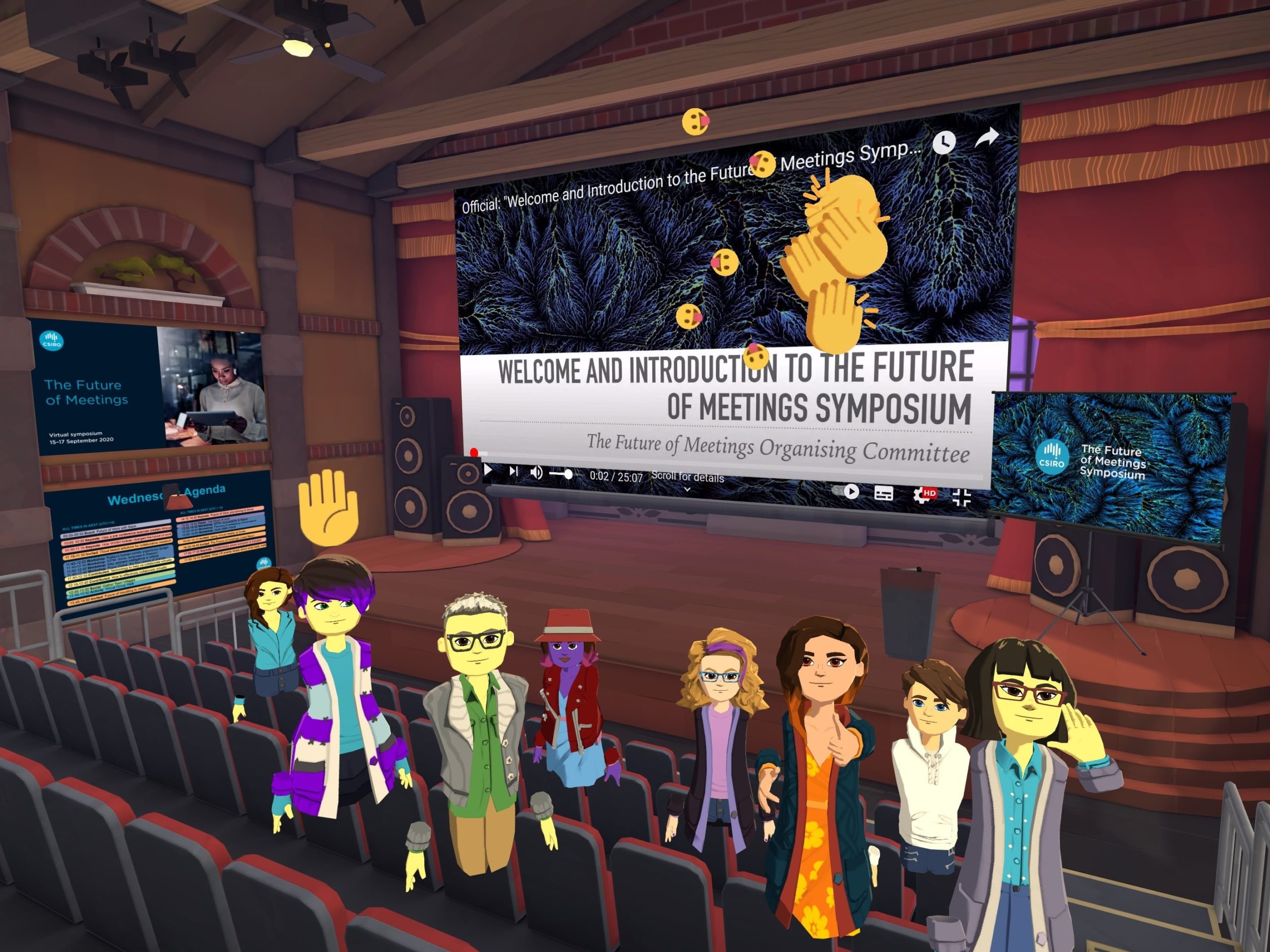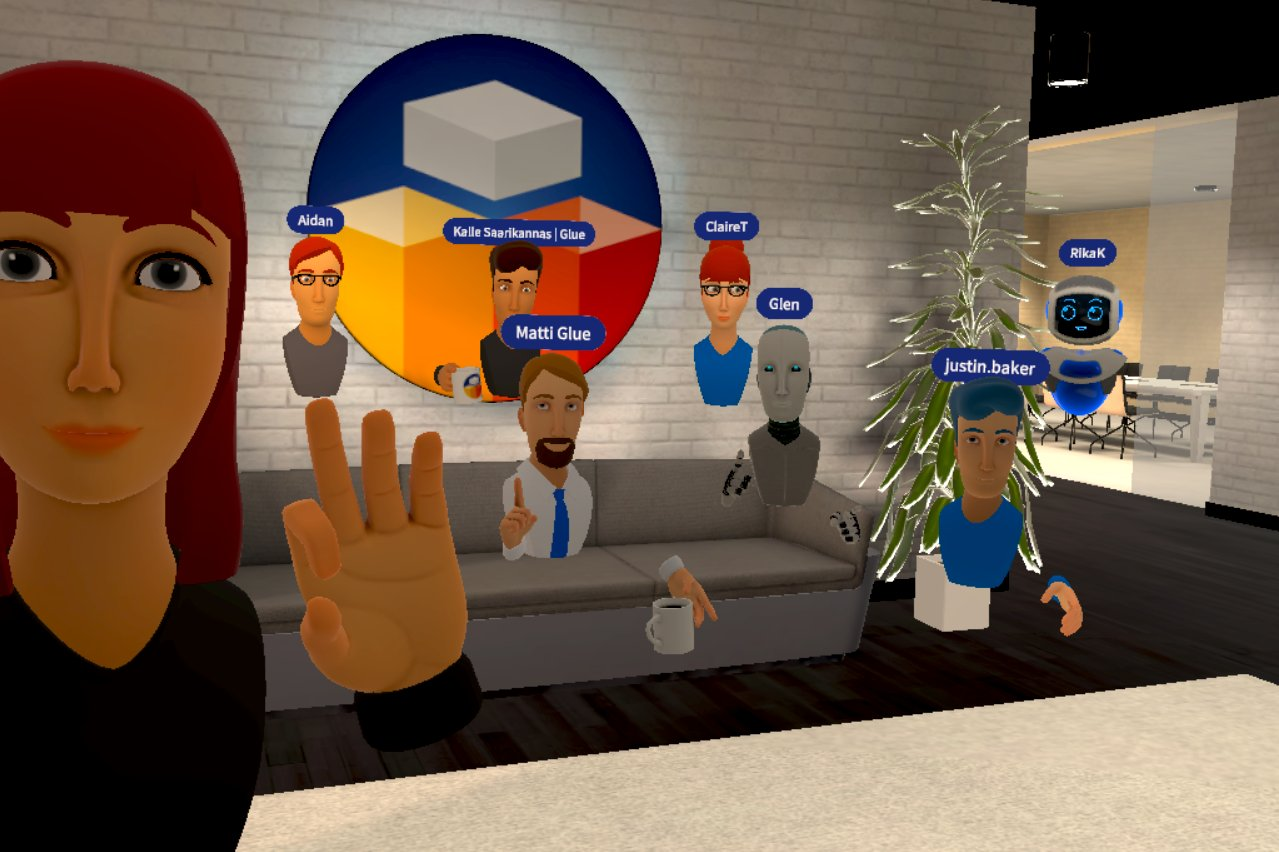
We’re researching what the future of meetings and work interactions looks like to be more sustainable and inclusive.
The ongoing pandemic has challenged much of what we previously considered to be ‘normal’ in how we work and socialise. But it offers us a unique opportunity to redefine the world we return to.
Along with a team of enthusiastic and innovative researchers within our organisation and beyond, we’ve been exploring what the future of meetings, conferences and interaction might look like. We hosted a virtual-only symposium in September 2020 on the future of meetings (or TFOM for short).
What did we learn?
Ultimately, we found there’s no ‘one size fits all’ solution when it comes to effective virtual interaction. But there are many quick and easy ways to improve your next interaction, whether you are the organiser or a participant.
So, here are five tips to improve how you meet.
Consider whether your interaction is DAISERVE-friendly
Our key recommended elements to ensure your virtual meeting is a success are:
- Digital first
- Accessibility
- Inclusivity
- Sustainability
- Experimentation
- Right tool/approach
- Value
- Evaluation
Aim to be DAISERVE-friendly in your future meetings. Digital first means designing the interaction so that people have equal influence regardless of how they participate, whether that’s in-person or online. This will help you maximise the very important elements of accessibility, inclusivity and sustainability.
Experimentation is important to make sure that you can choose the right tool or approach for your meeting. Value captures the wider value contributed by organisers in the form of ownership, the value offered to attendees and value for investment in tools and services.
Every interaction will be much improved if it’s purpose-driven, outcome-focussed and held to account by evaluation throughout.
Check out our article in Nature Astronomy to find out more.
Directly address the challenges of virtual interaction
Some aspects of virtual interaction may fall short of the in-person equivalent. However, there are immense benefits that far outweigh any challenges.
There are also many ways to improve our virtual interactions. One way is to modify the structure, scheduling and content of virtual interactions to better suit the format. Another is to increase the use of collaborative approaches that allow people to participate in their own time, regardless of their time zone. Examples of the latter include digital messaging, whiteboarding and polling tools, reducing the need to meet live.
Improved technologies and reliable internet connections have already led to a more connected world than ever. Alongside this, we see amazing potential in the rapid rise of virtual, augmented and mixed reality technologies for collaboration. Effective use of these technologies can result in dramatic improvements to the ways we meet online, helping us to feel more connected and present in the virtual format.
When designing a virtual interaction, think about the biggest challenges to address, and the goals of the meeting or conference. We’re not advocating for never meeting in person again, of course. But it is vital to consider whether meeting in person is the most effective and necessary option when balanced against the financial and environmental costs.

The future of meetings highlights online cross-platform tools such as “Glue VR.” They enable you to co-exist with others in the same virtual space for immersive discussion, collaboration or planning.
Account for the impact your interaction format has on attendees
You might have heard that ‘hybrid’ – a mix of virtual and in-person participation – is the future of interaction. But we’re still exploring exactly what effective hybrid interaction looks like.
A successful hybrid solution would ensure that in-person attendees don’t have an advantage over those attending virtually. That way, everyone can contribute to the conversation in an equal way. By designing interactions ‘digital first’, everyone has a fair chance to contribute their voice. There are so many possibilities for evolving how we connect, communicate and collaborate. And it starts from considering carefully whether you’re designing your interaction format to best benefit those who will take part.
Recognise that effectively building digital events requires specific skills
A good online event must be as carefully designed as an equivalent in-person event. But these two formats are also distinct, requiring different skill sets for success.
It’s arguable whether we should be designing our virtual interactions to look like what we would do in-person. Instead, we should rethink why and how we meet, given the great potential of new digital platforms. Not everyone has the digital literacy required to feel comfortable with these new technologies, so dedicating effort to helping people over the technology barrier is also important.
We‘ve found that virtual interactions can be put together effectively in less time with less resources. This makes them an important leveller in terms of how much easier it can be to bring people together. But just as there is a spectrum of success in terms of in-person events and conferences, it’s also true for the virtual kind. It’s critical to approach building a virtual interaction with the format in mind in order to maximise success.
Realise and embrace your role in shaping the future of interaction
One of the most exciting things about what we’ve learned is there are no easy answers and so many interesting questions and solutions to explore!
We’re all able to contribute to defining a better normal for the future of interaction, helping ourselves and others to connect effectively. We hope with our future work in this space to continue to explore and evolve best practice for the ways we meet. We encourage you to think about your own experiences, the challenges you and others are facing, and what steps you can take to make your next interaction better for all involved.

